Features
Artist Update With Bassist Michael League
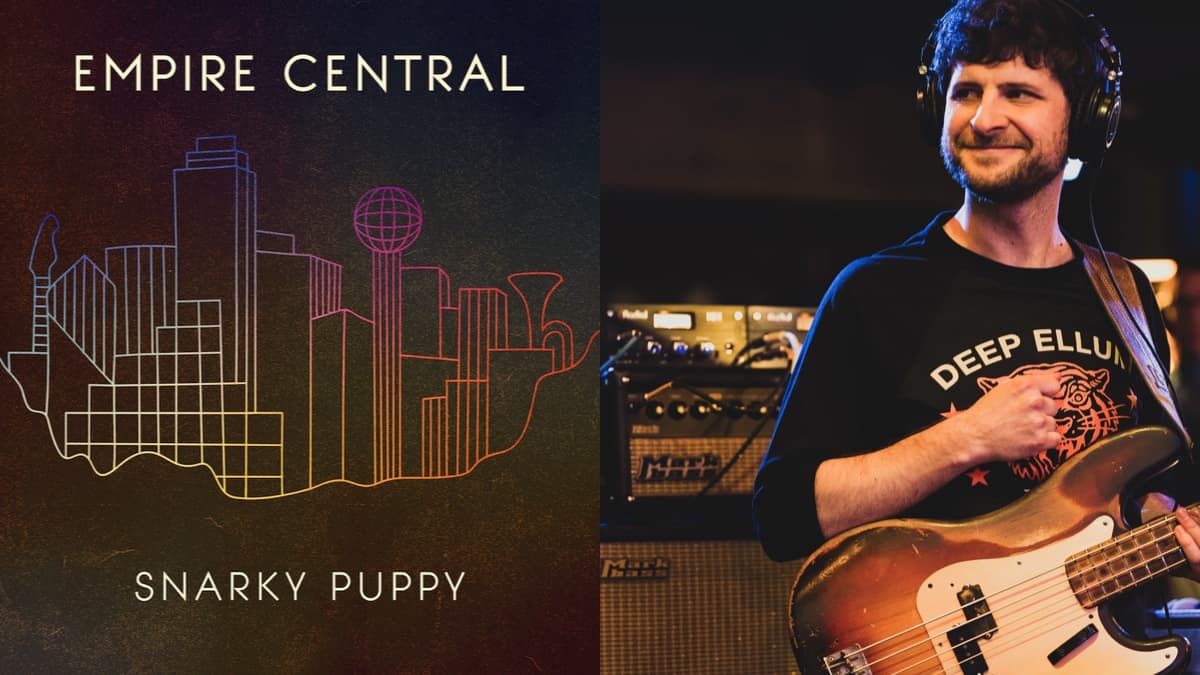
It’s possible that Michael League will stop taking interviews with this writer, for fear of associated bad luck.
When Michael League and I sat down for our interview in 2012, his day had been plagued by horrible, bizarre travel problems that jeopardized his next day’s plans. While taking this interview, Michael’s home was pelted by a surprise hailstorm, which turned relaxing on a summer day into suddenly having to make sure patio roofing had stayed intact during the frozen downpour. Just as was the case in 2012, Michael refused an offer to postpone the interview; instead, he happily and enthusiastically shared his thoughts about the new Snarky Puppy album, Empire Central.
Recorded live over 8 days in front of an in-studio audience, the 16-track album is a masterpiece of Dallas funk, R&B, soul, and fusion, mixed with the Pup’s ever-growing catalog of diverse influences. The ode to the town where Snarky Puppy truly came into their own showcases a landscape that includes greasy funk (“Keep It On Your Mind“), frenetic swing (“Pineapple”), bouncing fusion (“Cliroy”), and slinky blues (“RL’s”). The propulsion of every composition, regardless of style, comes from League’s magnificent bass playing. Highlights are too numerous to catalog in a single list, but the pulsing ostinatos of “Coney Bear”, rapid walks of “Pineapple”, beautiful lyricism of “Trinity”, and infectious bounce of “Take It!” are not to be missed.
The track “Take It” is of special importance, as it features the “Godfather” of Snarky Puppy, keyboardist Bernard “Nard” Wright. The funk/fusion pioneer Wright passed away tragically in a car accident shortly after making this recording with Snarky Puppy. A natural starting point for this conversation was to celebrate the relationship between Michael and Nard, whom League calls his “musical Yoda”.
We spoke about the mentor-apprentice relationship you had with Nard in our interview from 2012. Perhaps you could describe that mentorship again since that type of relationship doesn’t seem to happen anymore?
Yeah, you’re right. I don’t know how much it’s ever been a thing in the jazz community. There are definitely stories of a great jazz musician studying with another. I think that since the institutionalization of jazz in academic environments, the whole jazz school/jazz college thing, it has definitely reduced the mentorship situation, because people who previously might have sought out a specific musician for guidance now just go through the system, so to speak. I think that of all the musicians that I know that play jazz, I would say that one out of several dozen has had a real mentorship situation that lasted more than a few months.
With Nard, it was three years that I was with him almost every day…5 days a week, and mostly one on one. The funny thing is, when you said, “describe the mentorship”, it wasn’t a formal mentorship like I would go to his house like a musical guru or something. It wasn’t like that – he didn’t have a car and he had a lot of gigs, so I would just drive him to his gigs. We’d talk about music on the way, we’d talk about music on the way back. I’d help set up his gear, I’d sit there and watch the whole show, and occasionally we’d do a formal lesson. We were playing together at least 3 days a week because we played at the same church on Saturdays, Sundays, and Wednesdays. On Wednesdays, RC Williams and the Gritz had and still have a jam session on Wednesdays and that’s where Nard and I would go together. He had a regular Monday night gig with John Carruth and Wes Stevenson that was unbelievable. It was mentorship in a really interesting way, it wasn’t curriculum in private lessons and classes. I was just around him; I was seeing him rehearse, I was seeing him perform, I was seeing him at church, I was seeing him in clubs, and I was talking with him on 40-minute drives.
I’m certain it’s hard to reduce all of Nard’s wisdom to a few thoughts, but are there any lessons or ideas that he shared that come immediately to mind?
In three years of having conversations about music with somebody, it’s hard to isolate and compartmentalize things you’ve learned. But he gave me some really great advice, maybe I can share that. He said there are three reasons to take a gig:
1. To grow musically,
2. To help a friend, and
3. To make money.
If someone offers you a gig and it doesn’t have any of those things, don’t take it. If someone offers you a gig and it has one of those things, consider it but be skeptical. If someone offers you a gig and it has two of those things, it’s a really nice gig. If it has all three, never let it go! I thought that was really wonderful advice!
Let’s talk about the new album, Empire Central. It’s been described as a love letter to Dallas; after the inception of Snarky Puppy in Denton (University of North Texas), what was the influence of Dallas on the band’s sound?
College is where we were trying out things compositionally and getting our feet wet. When I moved to Dallas and Justin (Stanton) also moved to Dallas, and some of the other members of the band started coming down several times a week to check out what was going on, I would say that’s like the sound that we still have today. That’s Snarky Puppy’s sound, this combination of curious college student thing, especially being curious about different kinds of music from around the world, and integrating jazz into that, and mixing in the Dallas soul. The kind of feet-planted-on-the-ground kind of thing. I would say that Dallas, more than Denton, formed the sound of the band because it had a scene that was already influential on our music before we started hanging down there. We were already influenced by the RH Factor, we were already influenced by Kirk Franklin, and Bobby (Sparks), and all this work that Shaun (Martin) and Sput (Searight) and RC (Williams) had done with (Eryka) Badu. It was already kind of in the DNA of the band, but there was a degree of separation, then once people like Bobby and Sput and Shaun and Bernard started playing in the band that degree disappeared and that formed the sound that we’ve been developing ever since.
How about personally? What did you glean from your time in Dallas?
Music generally is learned in a way that is – you used the word organic before – it just enters you based on your environment. I don’t really know a better way of explaining it – you play those gigs, and you hang with those people, wherever you are, whether you’re in Japan or Brazil or Turkey or Ghana or Dallas. When you’re in the community and you’re immersed in a culture and a scene and a group of people then everything kind of goes into you through osmosis.
I was watching a clip of you presenting a clinic with Marcus Miller, and he was talking about filling on beat 4 of a groove. You came in and filled on 1, and I had to wonder if things like that were gospel inspiration from Dallas?
I never thought of it as a gospel thing, but it’s something that I do a lot – I always try to fill in places that people normally don’t fill. Because obviously if I fill where the drummer fills, no one hears my fill and no one hears the drummer’s fill. It becomes a joint mess. I like that idea of getting in the cracks, which is something that I like to do compositionally as well. The fact that I don’t recognize that as a gospel thing doesn’t mean it’s not true – it probably is, and it got into me by playing a lot of gospel music.
There are 12 songwriters on the new album – what was you message to them as far as a theme or direction to take?
This record is for and about Dallas – it’s about celebrating Texas music culture and I wanted them to think about that as they were composing. I asked them to think about the things that Dallas has given them and just have them in mind while they’re writing. I didn’t give anything more specific; I just left it open like that.
I heard that, even though you put out the call to the band to start writing songs over a year from the recording date, many people were still writing the week of the date?
Yeah – as always with Snarky Puppy, people are finishing the songs during the rehearsal. It’s just the way that it always is. I gave people a year and a half notice and I myself didn’t write songs until a week or two before! It’s just the way that it is with this band sometimes. Everyone has a lot of things going on and generally people do things at the last minute because they know that we can get away with it.
And you did two weeks of rehearsal to get it all together?
10 days.
In what form do the songs come into rehearsal – full compositions, partial songs, fragments?
We don’t rehearse songs until they’re done, but what I’m saying is that people were rehearsing two songs a day written by other people in the band, and then at 3 in the morning they were working on their own songs so we could play them the next day or the day after. That’s the nice thing though – when you have 19 people playing and everyone writes a song, that’s a lot of songs. It’s not a lot of individual work to write the songs, it’s a lot more individual work to learn everyone else’s songs.
Let’s get your take on a few tunes from the new album.
“Keep It On Your Mind”
I was definitely channeling the Dallas thing, or trying to at least, when I was writing. Specifically, this groove that happens in the solo section is based off of a legendary funk groove by a band called Yarbrough and Peoples, a song called “Don’t Stop the Music” was the direct inspiration. I was just trying to write something that would be a great show opener and that also was slow and greasy, with the bass line being featured as much as the melody. I feel like in the verse, that actual melody is really simple, so you can get into what the bass line is doing.
“Pineapple”
Maz is always into the new jack thing, like that song, “Skate U”, there was also some new jack kind of stuff in that. It’s kind of his zone, he loves it. That one was mostly Maz; I wrote one of the sections, but largely what I did on that was form stuff. He had a bunch of ideas and I turned some of the into sections and did formwork on it. But the majority of the composition is his. That was really fun because I love songs like that, when you play them live and you’re on stage and you want to play a song that’s not epic, it’s not a journey, it’s just fun from beginning to end. It smacks you in the face and you move on! I love that because in Snarky Puppy composition is such a priority for us – the most important thing is respecting and honoring the compositions and serving them. Sometimes people go so hard thinking about the journey of the song but then you end up with a concert where every song is too long and does too many different things and so it’s nice to have hard-hitting, straight-up groovy, catchy things and I feel like Maz did a beautiful job of doing that with, “Pineapple”.
“Trinity”
It’s a really fun one. That’s a really good example of mixing a lot of very distinct Texas influences and Mark Lettieri is as Texas of a guitar player as you can find. Even though he’s not from there, he’s lived there for so long and has incorporated that sound so much into his own playing. I love that song, just because it’s very joyful and it’s fun and quirky and it’s funny to me. It has a sense of humor, which I think is also essential if you’re trying to represent Texas.
That’s interesting – I have a good friend who texted me as soon as they heard “Trinity” and they were moved by how deep and soulful the song was. I suppose that’s the freedom in enjoying instrumental music?
Mark would love to hear that feedback! That’s the nice thing about instrumental music – people really can interpret it however they way and no one can tell you you’re wrong. I think it’s great!
What was the most challenging song to get through for the recording sessions?
I think on this one, there was only one song that we tried that we didn’t record – it was the fifth one of mine. We started rehearsing it on the third day of the album recording, we were already in there tracking and I thought if things go quickly and well, we’ll put it on there…and my songs never go quickly and well! It’s always a long process before things start sounding right, just because of the way I write, it’s not as clear as other guys in the band who just write things and they sound great the first time that we play them. But you know, that’s just how life works!
Now that the album is out, it’s back to touring, which is a core component for Snarky. Did the last few years of not being able to tour change any of your thoughts or perspectives of being on the road?
I think everyone re-evaluated their lives and the way they spend them during the pandemic. I think a lot of us thought about how we tour and how we travel and how to make it more sustainable and more liveable. Both for the environment and for us physically and mentally. We all definitely missed touring but 2019, the year before COVID, was just a 9-month touring slog year. Everyone also enjoyed a little bit of the break and we all felt lucky that we were able to earn some money before two years of not working, basically. Everyone in this band is a student of music and tries to grow every day. During the pandemic, different members of the band were working on different things and growing on an individual level. After two years of that, everyone comes back and the band sounds different because everybody grew. We did our best to make the best of a really terrible situation. We did what we could.
You always have a bunch of irons in the fire – what else is next for you, personally?
Right now, more than anything else, production is my focus. I’m starting a new record for the bass player Kinga Glyk. We going to start doing the writing and the preproduction for her record. She’s going to track with Robert “Sput” Searight and Casey Benjamin and Nick Semrad from Corey Henry’s band. That will be a really fun band. I’m doing a record for Harold Lopez-Nussa, who’s a Cuban piano player. Then a couple of more things later in the year. So, for me, production is the main thing. Bokante made a new record – my other band! I’m really excited about that one and that will come out next year. I made a duo record with Bill Laurence from Snarky Puppy, where I play Turkish oud mostly and some fretless acoustic guitar-bass. That record will come out next year. Music is life, so I just stay inspired and that’s easy when you work with inspiring people and I have the very, very good fortune of basically doing exclusively that. I count myself as very fortunate.
Last question: in our interview from 2012 I asked if you had anything big that you wanted to do but hadn’t been able to yet. You described wanting to do a live concert in Park Güell, in Barcelona. Over a decade later, how are those plans coming along?
That strangely has still not left my mind! Normally crazy, stupid ideas…I forget about them after about a year. That one, every time I go to Park Güell I think about that – man, this would be such a great place to make a live concert DVD. Maybe one day that will happen, who knows?
Photo: Photo credit: Brian Friedman
Visit online at snarkypuppy.com
Features
Alberto Rigoni On Unexpected Lullabies
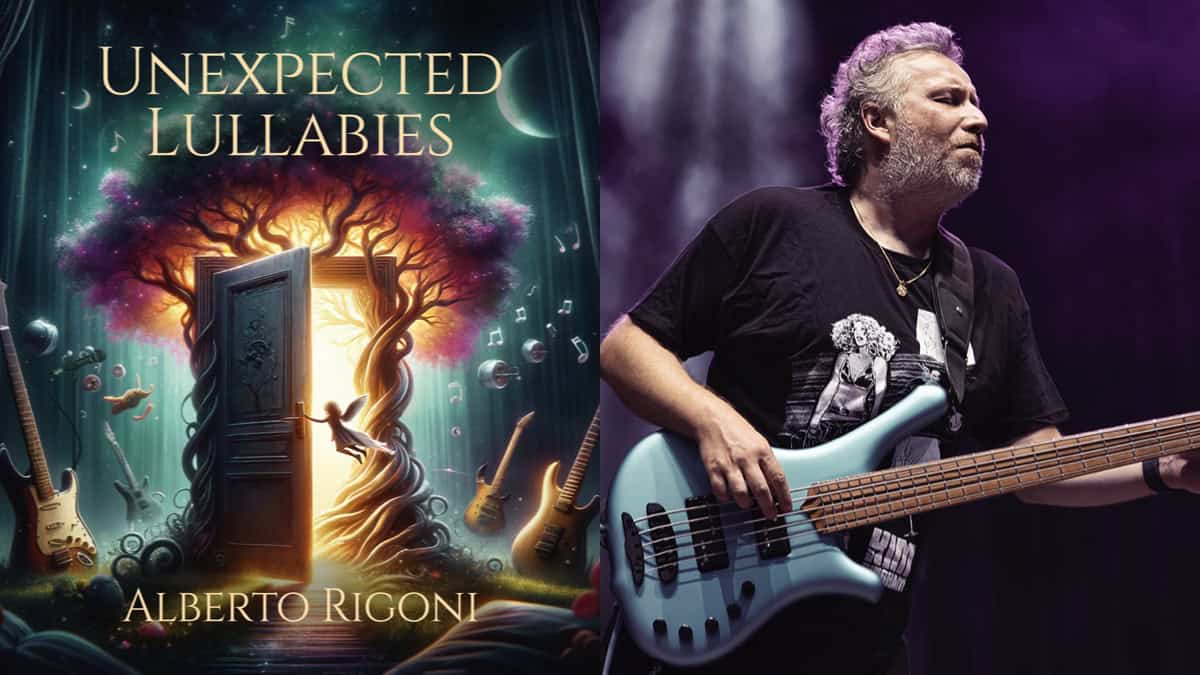
Readers have been fans of the composer, bass player, and Bass Musician contributor Alberto Rigoni for some time now.
In this interview, we had the opportunity to hear directly from Alberto about his love of music and a project near and dear to his heart, “Unexpected Lullabies”…
Could you tell our readers what makes your band different from other artists?
In 2005, I felt the urge to write original music. My first track was “Trying to Forget,” an instrumental piece with multiple bass layers (rhythm, solo, and arrangement), similar to the Twin Peaks soundtrack. When I played it for a few people, they really liked it, and I decided to continue composing based on my instinct and ear without adhering to any specific genre. In 2007, I released “Something Different” with Lion Music. The title says it all! Since then, I’ve released many solo albums, each different from the others, ranging from ambient to prog, fusion, jazz, and new age. I am very eclectic!
How did you get involved in this crazy world of music?
As a child, I listened to the music my parents enjoyed: my dad loved classical music, while my mom was into Pink Floyd, Genesis, Duran Duran, etc. These influences left a significant mark on my life. However, the turning point came at 15 when a drummer friend played me “A Change of Seasons” by Dream Theater, which was a shock! From that moment, I decided to play bass and cover Dream Theater songs, which I did for many years with my cover band, Ascra, until it disbanded in 2004. After that, I joined TwinSpirits (prog rock) led by multi-instrumentalist Daniele Liverani. Since then, I haven’t played any more covers!
Who are your musical inspirations, and what inspired the album and the songs?
My roots are in progressive rock metal, with influences from bands like Dream Theater, Symphony X, and many others. However, I listen to all genres and try to keep an open mind, which helps me compose original music. On bass, I was significantly inspired by Michael Manring and Randy Coven (bassist of Ark, Steve Vai, etc.). But I don’t have a real idol; I just follow my own path without compromise.
What are your interests outside of music?
Living in Italy, I love good food and wine! Beyond that, I have a deep interest in art in general and history, not just of my country. I enjoy spending time with friends, skiing, biking, and walking in nature. This is how I spend my free time. The rest of my time is devoted to music and my family!
Tell us about the new album.
It is definitely an out-of-the-box album. When I found out last year that I was going to have a baby girl, I decided to compose a sort of lullaby album, but I didn’t want to cover already famous lullabies. So, I started composing new tunes with the goal of creating an album that was half-sweet and half-hard rock. I did include some covers like “Strangers in the Night” by Frank Sinatra, sung by Goran Edman, former lead singer of Malmsteen. It’s not exactly a lullaby, but I felt the lyrics fit the album, as does the instrumental version of “Fly Me to The Moon.” There are also tracks with just bass and piano (Nenia) or two basses (Vicky). It was definitely an interesting creative process!
What is the difference between the new album and your previous releases, and will there be any new material from your other outfit called BAD AS?
BAD AS is essentially a metal band with several influences including prog. My solo genre is quite different, although there are some metal songs on a few albums. It’s always difficult for me to categorize my music… let’s say it’s a mix of prog, ambient, fusion, and new age.
Where was the album recorded, who produced it, and how long did the process take?
I produced my last album entirely by myself, including mixing and mastering. Unlike other albums I’ve produced within a few months, this one took much longer, perhaps because I was very busy or maybe because I wanted it to be perfect for my daughter, who is now three months old. In any case, I am satisfied. Once again, I did something different from my previous albums.
What is the highlight of the album for you and why?
My favorite song is the first track titled “Vittoria,” named after my daughter. It’s the intro to the record and isn’t very long, but the melody stuck in my head. Another standout track is the instrumental version of “Fly Me to The Moon” by Frank Sinatra, where I used fretless bass. The first part is sweet, the second part definitely rocks!
How are the live shows going, and what are you and the band hoping to achieve?
With BAD AS, this year we shared the stage with David Ellefson’s (former Megadeth bassist) band and talented young singer Dino Jelusik (White Snake). We plan to continue performing all over Europe!
What’s in store for the future?
I am working on an instrumental project called Nemesis Call, a progressive shred prog metal album with various influences. It will feature guest appearances from famous musicians like drummers Mike Terrana and Thomas Lang, as well as young talents like Japanese guitarist Keiji from Zero (19), 14-year-old Indian drummer Sajan Young, and guitarists Alexandra Zerner and Alexandra Lioness, Hellena Pandora. It’s scheduled for release at the end of the year or early 2025. As an independent artist, I have launched a fundraising campaign with exclusive pledges at www.albertorigoni.net/nemesiscall. And no, I am not begging; the album will be released anyway!
What formats is the release available in?
Unexpected Lullabies is available both as a Digipack CD and on streaming platforms.
What is the official album release date?
June 4th, 2024.
Thanks for this interview Bass Musician Magazine and for the continued support to my career!
Visit Online:
www.albertorigoni.net
www.youtube.com/albertorigoni
albertorigoni.bandcamp.com
www.instagram.com/albertorigonibassplayer
www.facebook.com/albertorigonimusic
www.tiktok.com/@albertorigonibassist
CD Track Listing:
1. Vittoria
2. Fly Me to the Moon
3. Azzurra
4. Dancing with Tears in My Eyes (feat. John Jeff Touch)
5. Out of Fear
6. Veni Laeatitia (feat. Alexandra Zerner)
7. Nenia
8. Slap Lullaby (feat. Karl Clews)
9. Saga
10. Vicky (feat. Michael Manring)
11. Ocean Travelers (feat. Vitalij Kuprij)
12. Strangers in the Night (feat. Göran Edman)
13. Peaceful
14. Un uomo che voga (feat. Eleonora Damiano)
Band Line-Up:
- Tommaso Ermolli arrangements on “Vittoria”
- Sefi Carmel on “Fly Me to the Moon” (Cover) (except for the keyboard solo by Alessandro Bertoni)
- Piano and keyboards by Alessandro Bertoni on “Azzurra”
- Leonardo Caverzan, guitars, and John Jeff Touch, vocals on “Dancing with Tears in my Eyes” (Cover)
- T. Ermolli keys on “Out of Fear”
- Alexandra Zerner everything on “Veni Laetitia”
- Daniele Bof piano on “Nenia”
- Karl Clews, piccolo bass on “Slap Lullaby”
- Jonas Erixon vocals and guitars on “Saga”
- Michael Manring bass on “Vicky”
- Vitalij Kuprij, keyboards and piano, and Josh Sapna, guitars, on “Ocean Traveler”
- Göran Edman, vocals, Emiliano Tessitore, guitars, Emiliano Bonini, drums, on “Strangers in the Night” (Cover) everything by Alberto Rigoni and vocals by Federica “Faith”
- Sciamanna on “Peaceful”
- T. Ermolli, guitars, and Eleonora Damiano, vocals, on “Un uomo che voga All drums programmed by Alberto Rigoni
Bass Books
Interview With Barker Bass’s Inventor and Writer Lee Barker
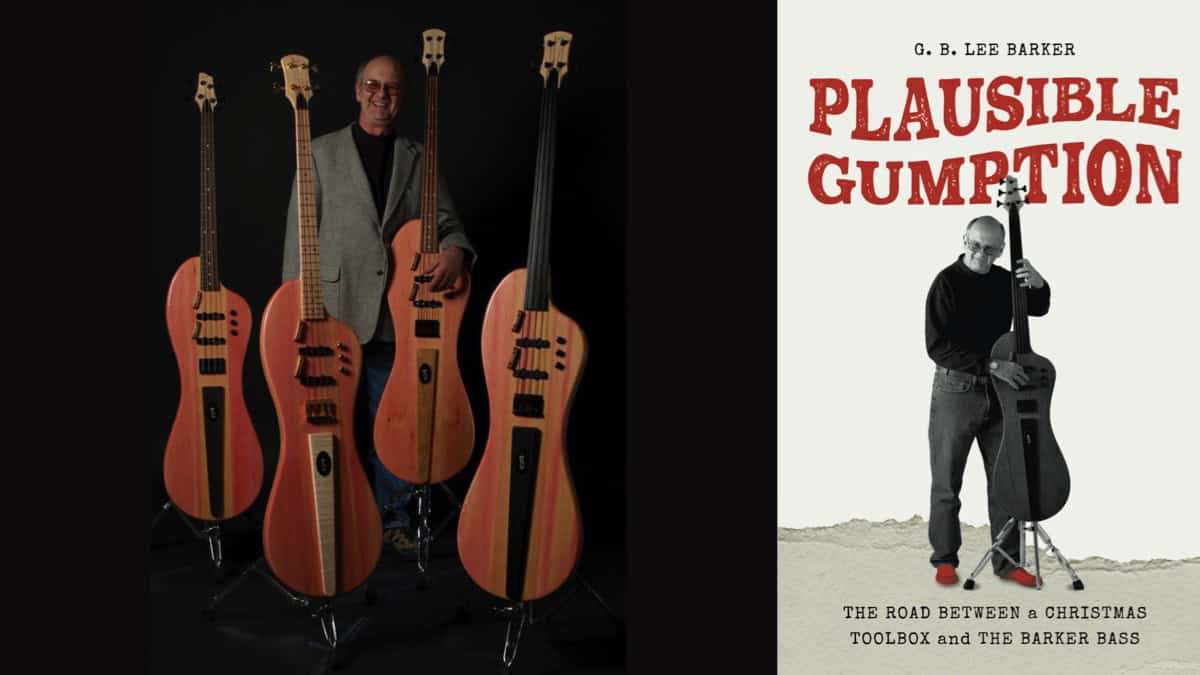
If you are an electric bass player, this is an exciting time to be alive as this relatively new instrument evolves around us. Some creative individuals have taken an active role in this evolution and made giant leaps in their own direction. Lee Barker is one of these inventive people having created the Barker Bass.
Fortunately, Lee is also an excellent writer (among so many talents) and has recently released his book “Plausible Gumption, The Road Between a Christmas Toolbox and The Barker Bass”. This book is a very fun read for everyone and shares a ton of details about Lee’s life in general, his experiences as a musician, a radio host, and a luthier. Now I am fortunate to have the great opportunity to gain even more insights into this renaissance man with this video interview.
Plausible Gumption, The Road Between a Christmas Toolbox and The Barker Bass is available online at Amazon.com
Features
Bergantino Welcomes Michael Byrnes to Their Family of Artists
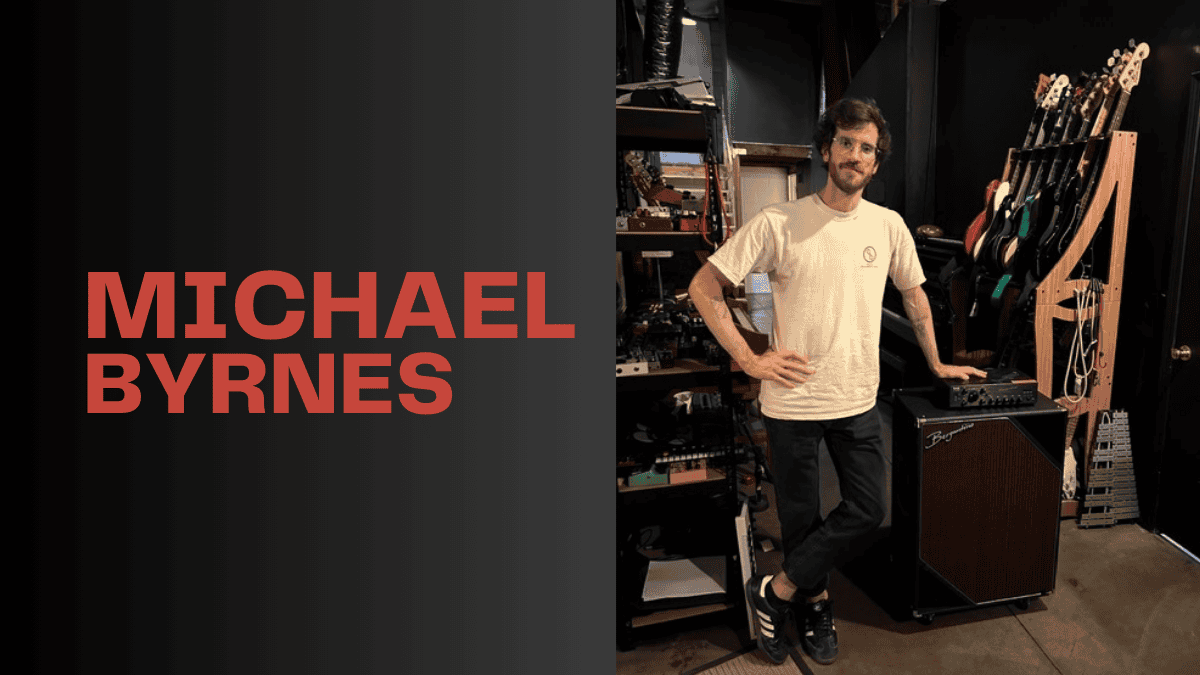
Interview and photo courtesy of Holly Bergantino of Bergantino Audio Systems
With an expansive live show and touring, Mt. Joy bassist Michael Byrnes shares his experiences with the joyful, high-energy band!
Michael Byrnes has kept quite a busy touring schedule for the past few years with his band, Mt. Joy. With a philosophy of trial and error, he’s developed quite the routines for touring, learning musical instruments, and finding the right sound. While on the road, we were fortunate to have him share his thoughts on his music, history, and path as a musician/composer.
Let’s start from the very beginning, like all good stories. What first drew
you to music as well as the bass?
My parents required my sister and I to play an instrument. I started on piano and really didn’t like it so when I wanted to quit my parents made me switch to another instrument and I chose drums. Then as I got older and started forming bands there were never any bass players. When I turned 17 I bought a bass and started getting lessons. I think with drums I loved music and I loved the idea of playing music but when I started playing bass I really got lost in it. I was completely hooked.
Can you tell us where you learned about music, singing, and composing?
A bit from teachers and school but honestly I learned the most from just going out and trying it. I still feel like most of the time I don’t know what I am doing but I do know that if I try things I will learn.
What other instruments do you play?
A bit of drums but that’s it. For composing I play a lot of things but I fake it till I make and what I can’t fake I will ask a friend!
I know you are also a composer for film and video. Can you share more
about this with us?
Pretty new to it at the moment. It is weirdly similar to the role of a bass player in the band. You are using music to emphasize and lift up the storyline. Which I feel I do with the bass in a band setting. Kind of putting my efforts into lifting the song and the other musicians on it.
Everybody loves talking about gear. How do you achieve your “fat” sound?
I just tinker till it’s fat lol. Right now solid-state amps have been helping me get there a little quicker than tube amps. That’s why I have been using the Bergantino Forté HP2 – Otherwise I have to say the cliche because it is true…. It’s in the hands.
Describe your playing style(s), tone, strengths and/or areas that you’d like
to explore on the bass.
I like to think of myself as a pretty catchy bass player. I need to ask my bandmates to confirm! But I think when improvising and writing bass parts I always am trying to sneak little earworms into the music. I want to explore 5-string more!
Who are your influences?
I can’t not mention James Jamerson. Where would any of us be if it wasn’t for him? A lesser-known bassist who had a huge effect on me is Ben Kenney. He is the second bassist in the band Incubus and his playing on the Crow Left the Murder album completely opened me up to the type of bass playing I aspire towards. When I first started playing I was really just listening to a lot of virtuosic bassists. I was loving that but I couldn’t see myself realistically playing like that. It wasn’t from a place of self-doubt I just deep down knew that wasn’t me. Ben has no problem shredding but I was struck by how much he would influence the song through smaller movements and reharmonizing underneath the band. His playing isn’t really in your face but from within the music, he could move mountains. That’s how I want to play.
What was the first bass you had? Do you still have it?
A MIM Fender Jazz and I do still have it. It’s in my studio as we speak. I rarely use it these days but I would never get rid of it.
(Every bass player’s favorite part of an interview and a read!) Tell us about
your favorite bass or basses. 🙂
I guess I would need to say that MIM Jazz bass even though I don’t play it much. I feel connected to that one. Otherwise, I have been playing lots of great amazing basses through the years. I have a Serek that I always have with me on the road (shout out Jake). Also have a 70’s Mustang that 8 times out of 10 times is what I use on recordings. Otherwise, I am always switching it up. I find that after a while the road I just cycle basses in and out. Even if I cycle out a P bass for another P bass.
What led you to Bergantino Audio Systems?
My friend and former roommate Edison is a monster bassist and he would gig with a cab of yours all the time years ago. Then when I was shopping for a solid state amp the Bergantino Forté HP2 kept popping up. Then I saw Justin Meldal Johnsen using it on tour with St. Vincent and I thought alright I’ll give it a try!
Can you share a little bit with us about your experience with the Bergantino
forte HP amplifier? I know you had this out on tour in 2023 and I am pretty
certain the forte HP has been to more countries than I have.
It has been great! I had been touring with a 70’s SVT which was great but from room to room, it was a little inconsistent. I really was picky with the type of power that we had on stage. After a while, I thought maybe it is time to just retire this to the studio. So I got that Forte because I had heard that it isn’t too far of a leap from a tube amp tone-wise. Plus I knew our crew would be much happier loading a small solid state amp over against the 60 lbs of SVT. It has sounded great and has really remained pretty much the same from night to night. Sometimes I catch myself hitting the bright switch depending on the room and occasionally I will use the drive on it.
You have recently added the new Berg NXT410-C speaker cabinet to your
arsenal. Thoughts so far?
It has sounded great in the studio. I haven’t gotten a chance to take it on the road with us but I am excited to put it through the paces!
You have been touring like a madman all over the world for the past few
years. Any touring advice for other musicians/bass players? And can I go to Dublin, Ireland with you all??
Exercise! That’s probably the number one thing I can say. Exercise is what keeps me sane on the road and helps me regulate the ups and downs of it. Please come to Dublin! I can put you on the guest list!
It’s a cool story on how the Mt. Joy band has grown so quickly! Tell us
more about Mt. Joy, how it started, where the name comes from, who the
members are and a little bit about this great group?
Our singer and guitarist knew each other in high school and have made music together off and on since. Once they both found themselves living in LA they decided to record a couple songs and put out a Craigslist ad looking for a bassist. At the time I had just moved to LA and was looking for anyone to play with. We linked up and we recorded what would become the first Mt. Joy songs in my house with my friend Caleb producing. Caleb has since produced our third album and is working on our fourth with us now. Once those songs came out we needed to form a full band to be able to do live shows. I knew our drummer from gigging around LA and a mutual friend of all of us recommended Jackie. From then on we’ve been on the road and in the studio. Even through Covid.
Describe the music style of Mt. Joy for me.
Folk Rock with Jam influences
What are your favorite songs to perform?
Always changing but right now it is ‘Let Loose’
What else do you love to do besides bass?
Exercise!
I always throw in a question about food. What is your favorite food?
I love a good chocolate croissant.
Follow Michael Byrnes:
Instagram: @mikeyblaster
Follow Mt. Joy Band:
Instagram: https://www.instagram.com/mtjoyband
Facebook: https://www.facebook.com/mtjoyband
Bass Videos
Artist Update With Mark Egan, Cross Currents
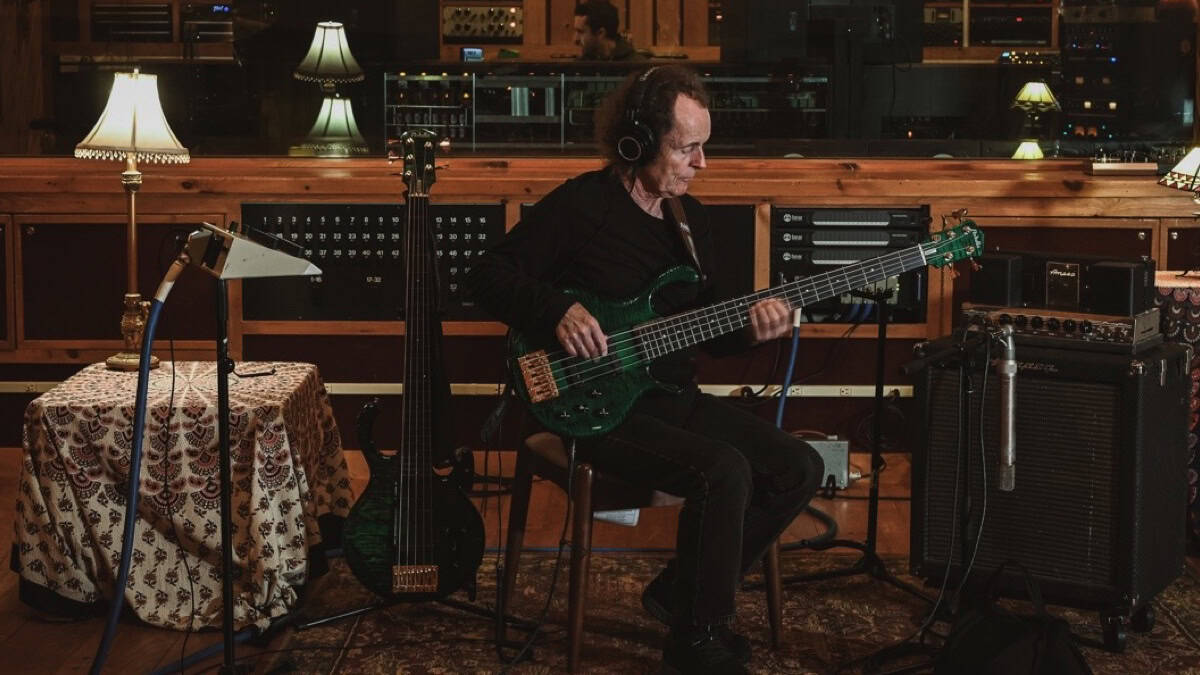
I am sure many of you are very familiar with Mark Egan as we have been following him and his music for many years now. The last time we chatted was in 2020.
Mark teamed up with drummer Shawn Pelton and guitarist Shane Theriot to produce a new album, “Cross Currents” released on March 8th, 2024. I have been listening to this album in its entirety and it is simply superb (See my review).
Now, I am excited to hear about this project from Mark himself and share this conversation with our bass community in Bass Musician Magazine.
Photo courtesy of Mark Egan
Visit Online:
markegan.com
markegan.bandcamp.com
Apple Music
Amazon Music
Bass Videos
Interview With By the Thousands Bassist Adam Sullivan
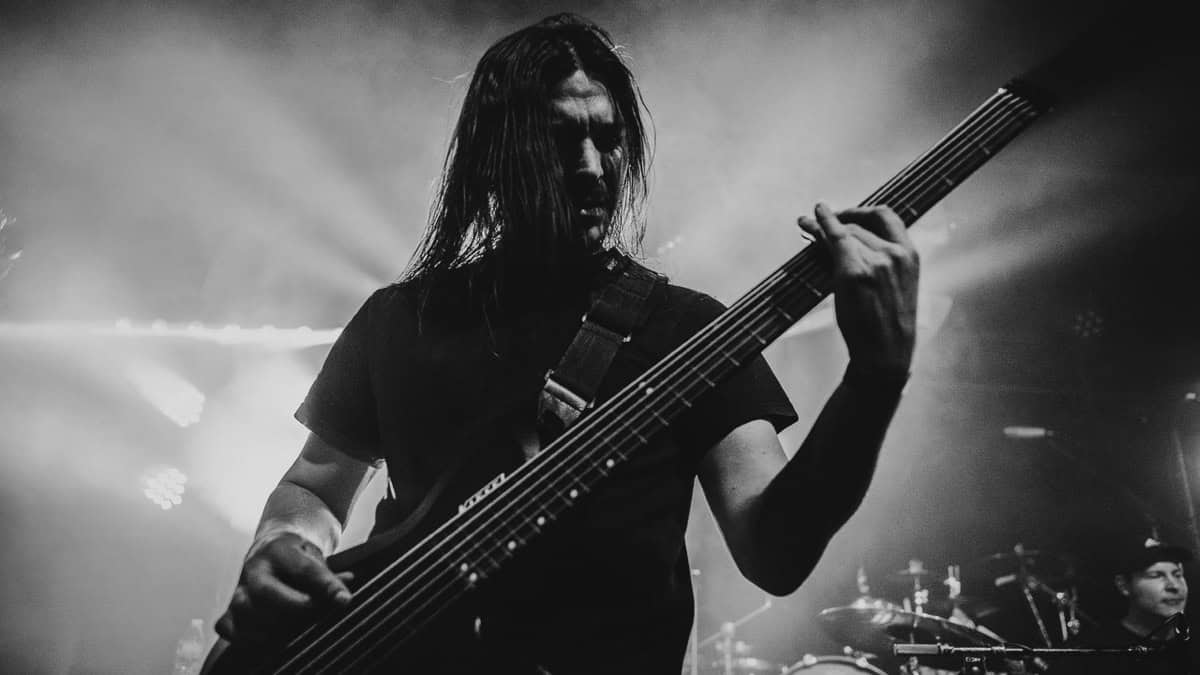
Bassist Adam Sullivan…
Hailing from Minnesota since 2012, By the Thousands has produced some serious Technical Metal/Deathcore music. Following their recent EP “The Decent”s release, I have the great opportunity to chat with bassist Adam Sullivan.
Join me as we hear about Adam’s musical Journey, his Influences, how he gets his sound, and the band’s plans for the future
Photo, Laura Baker
Featured Videos:
Follow On Social
IG &FB @bythethousands
YTB @BytheThousands












